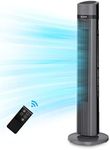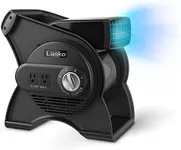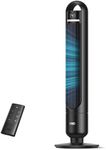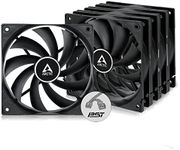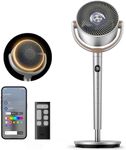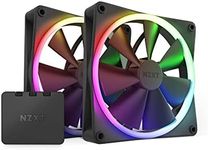Buying Guide for the Best Cooling Fans
Choosing the right cooling fan can make a big difference in your comfort, whether you're using it at home, in the office, or for specific equipment. The best fan for you depends on where you plan to use it, how much space you need to cool, and your preferences for noise, airflow, and features. Understanding the key specifications will help you match a fan to your needs and ensure you get the most effective and enjoyable cooling experience.Fan Size (Diameter)Fan size refers to the diameter of the fan blades, usually measured in inches or centimeters. This is important because larger fans can move more air and are better for cooling bigger spaces, while smaller fans are more portable and suitable for personal use or smaller rooms. Generally, fans under 12 inches are best for desks or bedside tables, 12-18 inches work well for medium rooms, and anything above 18 inches is ideal for large rooms or whole-house circulation. Think about the size of the area you want to cool and choose a fan size that matches—bigger isn't always better if you only need a gentle breeze in a small space.
Airflow (CFM)Airflow is measured in cubic feet per minute (CFM) and tells you how much air the fan can move. This is a key indicator of how effective the fan will be at cooling. Low CFM (under 1000) is suitable for personal fans or small rooms, medium CFM (1000-3000) works for bedrooms or offices, and high CFM (over 3000) is best for large spaces or whole-room cooling. If you need to cool a large area or want strong airflow, look for a higher CFM. For gentle, quiet air movement, a lower CFM may be more comfortable.
Noise LevelNoise level is usually measured in decibels (dB) and tells you how loud the fan will be when running. This is important if you plan to use the fan while sleeping, working, or watching TV. Fans under 40 dB are considered very quiet and good for bedrooms or offices, 40-60 dB is moderate and suitable for most living spaces, and above 60 dB can be quite loud, which might be fine for workshops or garages. If you are sensitive to noise or need a fan for a quiet environment, look for models with lower noise ratings.
Speed SettingsSpeed settings refer to how many different airflow levels the fan can provide. More speed options give you better control over comfort and noise. Basic fans may have just two or three speeds, while more advanced models offer five or more. If you like to fine-tune your airflow or want to use the fan in different situations (like sleeping vs. cooling a hot room), more speed settings can be helpful. If you just need simple on/off or basic cooling, fewer speeds may be enough.
OscillationOscillation means the fan can move side to side, spreading air over a wider area. This is important if you want to cool a whole room or share the fan with others. Some fans have fixed heads, while others can oscillate at different angles. If you need to cool a large area or want even air distribution, look for a fan with oscillation. For personal use or targeted cooling, a non-oscillating fan may be sufficient.
Type (Tower, Pedestal, Desk, Box, Clip-on, etc.)The type of fan refers to its design and intended use. Tower fans are tall and slim, good for saving space and blending into modern rooms. Pedestal fans are adjustable in height and can cool larger areas. Desk fans are compact and portable, ideal for personal use. Box fans are powerful and good for windows or large rooms. Clip-on fans attach to surfaces and are great for small spaces or specific spots. Think about where you’ll use the fan and how much space you have—choose a type that fits your needs and environment.
Additional Features (Remote Control, Timer, Air Purification, etc.)Some fans come with extra features like remote controls, timers, air purification, or smart connectivity. These can add convenience and comfort, such as being able to adjust settings from across the room or setting the fan to turn off automatically. If you value convenience or want extra functions, look for these features. If you prefer simplicity, a basic fan without extras may be easier to use.

